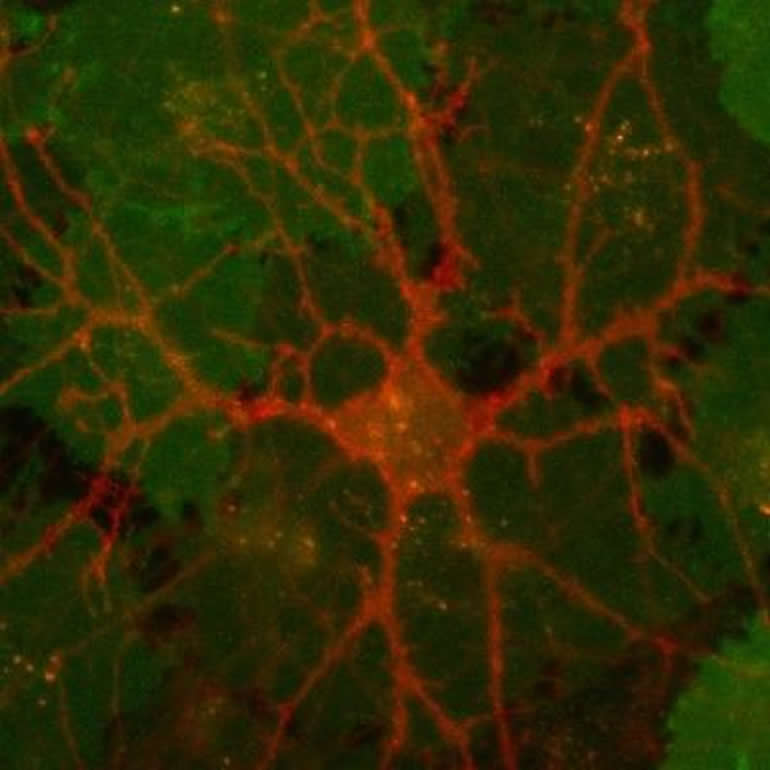Summary: A newly developed wider spectrum for the dLight1 sensor allows for multiplex imaging of neurotransmitters. The new sensor will help researchers detect and monitor different information processing activities in the brain.
Source: UC Davis Health
In 2018, Lin Tian and her team at UC Davis Health developed dLight1, a single fluorescent protein-based biosensor. This family of highly specific sensors detects dopamine, a hormone released by neurons to send signals to other nerve cells. When combined with advanced microscopy, dLight1 provides high resolution, real-time imaging of the spatial and temporal release of dopamine in live animals.
Recently, Tian and her team succeeded in expanding the color spectrum of the dLight1 sensor. In an article published Sept. 7 in Nature Methods, they introduced two new spectral variants of dLight1: the yellow YdLight1 and the red RdLight1.
“The new sensors will help researchers to detect and monitor different information processing activities in the brain,” said Lin Tian, associate professor of biochemistry and molecular medicine and the lead author on the study. “With the different colors, we will be able to see multiple neurochemical release and neural activities at the same time.”
The RdLight1 permits the simultaneous assessment of dopamine, pre- or post-synaptic neuronal activity and the glutamate release in specific types of cells and neuronal projections in animals. Its increased light penetration and imaging depth provide enhanced dopamine signal quality. This allows researchers to optically dissect dopamine’s release and model its effects on neural circuits.
As a neurotransmitter, dopamine plays an important role in movement, attention, learning and the brain’s pleasure and reward system.

“These exciting new tools opened a new door to developing color-shifted neurochemical indicators. Together with other tools, they have great potential to unlock the mysteries of brain chemistry in health and disease,” Tian said. “The knowledge we gain from these sensors will facilitate the development of safer next-generation therapies to neuropsychiatric disorders such as depression, anxiety, schizophrenia and addiction.”
The coauthors on this study at University of California, Davis are Tommaso Patriarchi, Junqing Sun, Ruqiang Liang, Chunyang Dong, Kyle Pugher, Grace Or Mizuno, Carolyn M. Davis and Brian Wiltgen, and at the University of California, San Francisco are Ali Mohebi, Aaron Marley Mark von Zastrow and Joshua D. Berke.
Funding: This work was supported by National Institutes of Health grant (DP2MH107056); BRAIN Initiative awards (U01NS090604, U01NS013522, U01NS103571, U01NS094375); Rita Allen Young Investigator Award and R01DA045783; Olga Mayenfisch Foundation; and Novartis Foundation for medical-biological Research.
About this neuroscience research article
Source:
UC Davis Health
Contacts:
Nadine Yehya – UC Davis Health
Image Source:
The image is credited to UC Regents.
Original Research: Closed access
“An expanded palette of dopamine sensors for multiplex imaging in vivo” by Patriarchi et al. Nature Methods.
Abstract
An expanded palette of dopamine sensors for multiplex imaging in vivo
Genetically encoded dopamine sensors based on green fluorescent protein (GFP) enable high-resolution imaging of dopamine dynamics in behaving animals. However, these GFP-based variants cannot be readily combined with commonly used optical sensors and actuators, due to spectral overlap. We therefore engineered red-shifted variants of dopamine sensors called RdLight1, based on mApple. RdLight1 can be combined with GFP-based sensors with minimal interference and shows high photostability, permitting prolonged continuous imaging. We demonstrate the utility of RdLight1 for receptor-specific pharmacological analysis in cell culture, simultaneous assessment of dopamine release and cell-type-specific neuronal activity and simultaneous subsecond monitoring of multiple neurotransmitters in freely behaving rats. Dual-color photometry revealed that dopamine release in the nucleus accumbens evoked by reward-predictive cues is accompanied by a rapid suppression of glutamate release. By enabling multiplexed imaging of dopamine with other circuit components in vivo, RdLight1 opens avenues for understanding many aspects of dopamine biology.






